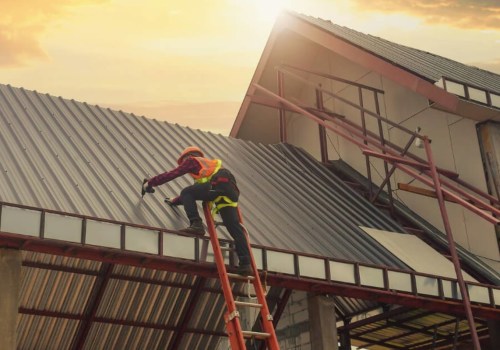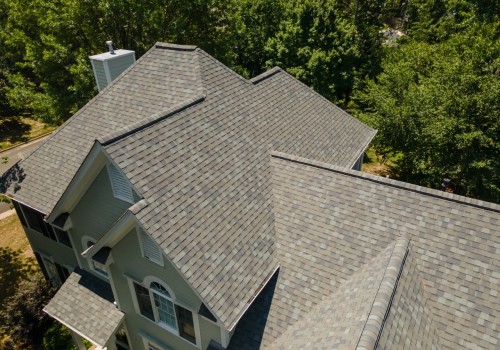When considering the optimal insulation for roof installation in Minneapolis, MN, the choice between spray foam and cellulose presents a crucial decision point. Both options have distinct advantages and considerations that can impact the efficiency, cost-effectiveness, and overall performance of the insulation. From energy efficiency and moisture resistance to environmental impact and R-value performance, each material brings its strengths to the table.
Both spray foam and cellulose insulation have their own set of advantages and disadvantages, making it important for homeowners in Minneapolis, MN, to carefully consider their specific needs and budget when choosing between the two. By understanding the differences between spray foam and cellulose insulation, homeowners can make an informed choice that will provide them with optimal comfort and energy efficiency in their homes.
Energy Efficiency Comparison
In assessing the energy efficiency between spray foam and cellulose roof insulation, it is crucial to consider several key factors. Firstly, the thermal conductivity comparison between the two materials is essential. Spray foam insulation typically has a lower thermal conductivity rating compared to cellulose insulation. This means that spray foam provides better insulation, reducing heat transfer and improving energy efficiency in buildings.
When evaluating energy savings potential, spray foam often comes out as the more efficient option. Its superior sealing properties help prevent air leakage, resulting in reduced energy consumption for heating and cooling. On the other hand, cellulose insulation, while effective, may not offer the same level of energy savings due to its tendency to settle over time, potentially creating gaps that allow heat transfer.
Considering weather resistance capabilities, spray foam generally outperforms cellulose insulation. Spray foam is resistant to moisture and can provide an additional barrier against water infiltration, which can help maintain its insulation properties even in challenging weather conditions.
Cost Analysis
When evaluating the financial implications of choosing between spray foam and cellulose roof insulation, it is essential to consider the upfront costs and long-term savings associated with each option. Spray foam typically has higher upfront costs due to the materials and labor involved in the installation process. However, its superior material durability often results in fewer maintenance requirements over time compared to cellulose insulation.
This durability can lead to long-term savings for homeowners, as they may not need to replace or repair the insulation as frequently as with cellulose. On the other hand, while cellulose insulation may have lower initial costs, it may require more maintenance and replacements due to its tendency to settle and compress over time, potentially leading to increased long-term expenses. Therefore, when considering the cost aspect, it is important to weigh the initial investment against the potential long-term savings and maintenance requirements of both spray foam and cellulose insulation options.
Installation Process Overview
The efficiency and effectiveness of the installation process for both spray foam and cellulose roof insulation play a crucial role in determining their overall performance and longevity. When comparing the installation of spray foam and cellulose insulation, it is essential to consider the material differences, application techniques, and long-term durability.
Spray foam insulation is typically applied as a liquid that expands to fill the cavity. This seamless application creates a continuous barrier that helps prevent air leakage and provides a high R-value per inch. On the other hand, cellulose insulation is usually blown or dense-packed into the cavity, offering good coverage and thermal performance.
In terms of long-term durability, spray foam insulation is known for its ability to adhere tightly to the surface, reducing the likelihood of sagging or settling over time. Cellulose insulation, while effective, may compact slightly over the years, potentially impacting its thermal resistance. Understanding these material differences and application techniques is crucial when deciding between spray foam and cellulose insulation for roof installations.
Moisture Resistance Factor
Considering the crucial role of moisture resistance in ensuring the longevity and effectiveness of roof insulation, the factor of moisture resistance distinguishes the performance of spray foam and cellulose insulation. Spray foam insulation exhibits superior moisture resistance capabilities compared to cellulose. This feature is particularly beneficial for long-term durability as it helps prevent issues such as mold, mildew, and rot that can arise from moisture infiltration.
The impermeable nature of spray foam creates a barrier that inhibits water vapor from seeping into the insulation material, thus safeguarding the roof structure from moisture-related damage. In contrast, cellulose insulation, while still offering some degree of moisture resistance, may be more prone to retaining moisture under certain conditions, potentially leading to microbial growth. Therefore, when prioritizing moisture resistance and microbial growth prevention in roof insulation, spray foam presents a favorable option for ensuring the sustained performance and integrity of the roof system over time.
R-Value Performance Evaluation
In evaluating the R-value performance of spray foam and cellulose insulation for roofs, a comprehensive analysis of their thermal resistance properties is essential. R-value measures the insulation's ability to resist heat flow, with higher R-values indicating better heat retention. Spray foam insulation typically has a higher R-value per inch compared to cellulose, offering superior thermal conductivity and heat retention capabilities. This means that spray foam provides better insulation effectiveness by reducing heat transfer through the roof, leading to improved energy efficiency and potential cost savings for homeowners in Minneapolis, MN.
Cellulose insulation, while effective in its own right, may have lower R-values per inch than spray foam, impacting its heat retention and thermal conductivity abilities. By prioritizing insulation with higher R-values and better thermal resistance properties, homeowners can ensure optimal energy efficiency and comfort within their homes.
Environmental Impact Assessment
When assessing the environmental impact of spray foam vs cellulose roof insulation, it is crucial to consider factors such as material sourcing, production processes, and long-term sustainability. Both spray foam and cellulose insulation offer sustainability benefits that align with green building considerations. Cellulose insulation is often made from recycled paper materials, promoting eco-friendly options by reducing waste and energy consumption during production. On the other hand, spray foam insulation, while not typically made from recycled materials, can provide significant energy savings over the life of the building due to its high R-value and air-sealing properties, contributing to long-term sustainability.
In terms of green building considerations, cellulose insulation stands out for its environmentally friendly composition and manufacturing process. It is often treated with borate compounds for fire resistance and pest control, which are less harmful to the environment compared to traditional chemical treatments. Meanwhile, spray foam insulation, although not without environmental concerns in its production phase, offers eco-friendly options such as low-VOC formulations that minimize off-gassing and environmental impact post-installation. Both insulation types have their own set of advantages when it comes to sustainability and green building practices, making them viable options for eco-conscious homeowners in Minneapolis.
Best Insulation Choice For Minneapolis
For optimal insulation performance in the Minneapolis climate, homeowners should carefully evaluate the specific requirements and benefits of both spray foam and cellulose options. Minneapolis experiences cold winters and hot summers, making climate suitability a crucial factor in choosing the right insulation. Spray foam offers excellent thermal resistance and can effectively seal gaps, making it ideal for extreme temperature fluctuations.
However, proper ventilation is essential with spray foam to prevent moisture buildup. On the other hand, cellulose insulation is known for its fire safety properties and soundproofing benefits, which can be advantageous in a bustling city like Minneapolis. When considering durability and maintenance, spray foam tends to be longer-lasting and requires minimal upkeep compared to cellulose, which may settle over time and need to be replenished. Ultimately, homeowners in Minneapolis should weigh these factors carefully to determine the best insulation choice based on their specific needs and preferences.
Contact A Professional Insulation Service In Minneapolis, MN
In the battle between spray foam and cellulose insulation for roof installation in Minneapolis, MN, the irony lies in the fact that while spray foam offers superior energy efficiency and moisture resistance, cellulose excels in cost-effectiveness and environmental friendliness. Ultimately, the best insulation choice for Minneapolis depends on the specific priorities and considerations of the homeowner.
Spray Foam Insulation Plus offers top-notch professional insulation services that prioritize quality, efficiency, and customer satisfaction. With their expertise in spray foam insulation and dedication to providing tailored solutions for each project, clients can trust that their insulation needs will be met with precision and care. Choosing Spray Foam Insulation Plus guarantees a well-insulated and energy-efficient space, backed by a team of skilled professionals committed to delivering exceptional results.




